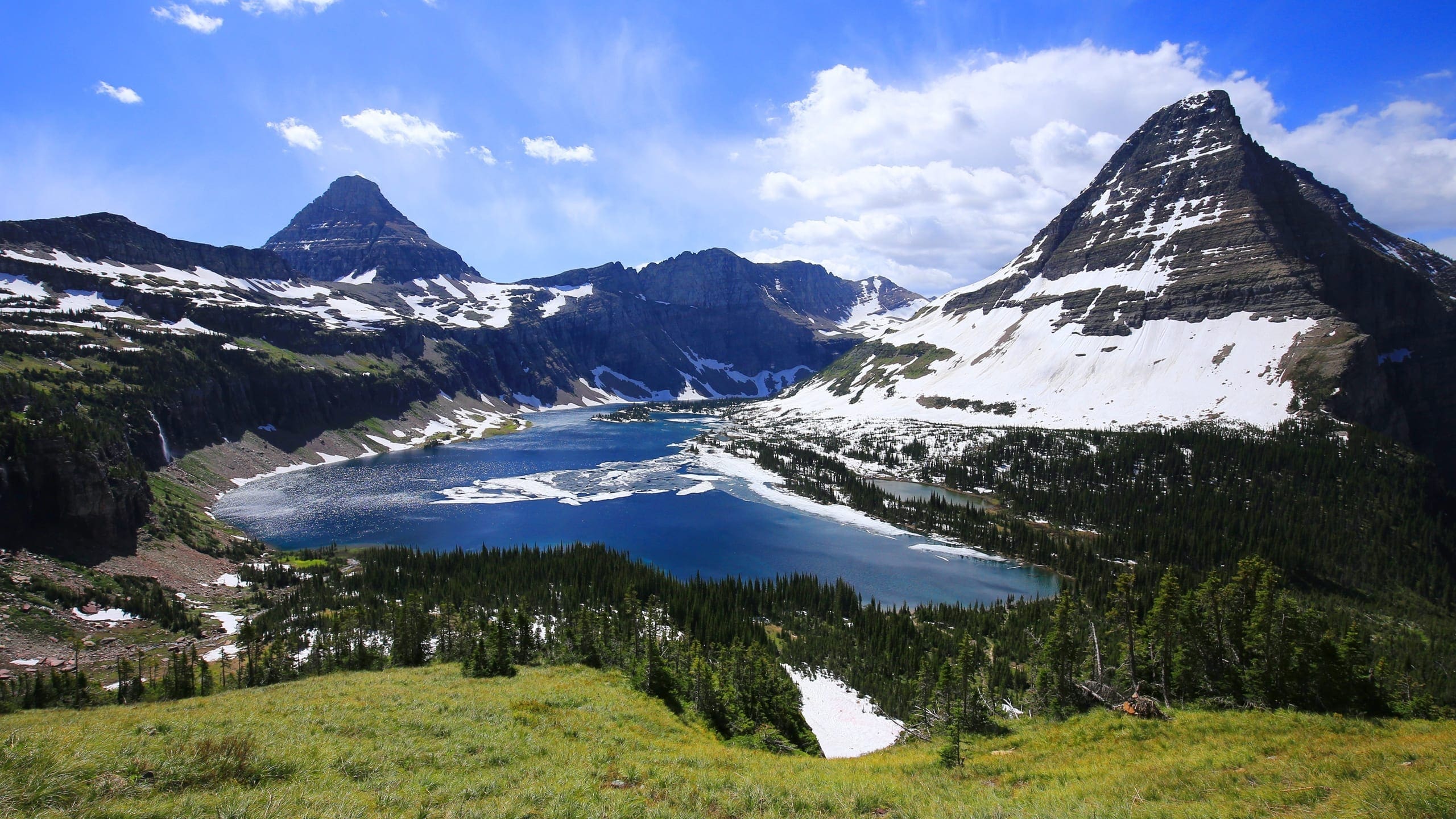About Glacier National Park
Surrounded by wilderness, bordered by Waterton Lakes National Park in Canada and two forks of the Flathead Wild and Scenic River, Glacier National Park is part of one of the largest, most intact ecosystems in North America—the Crown of the Continent. Together with Waterton Lakes National Park it is the world’s first international peace park, a world heritage site, and a biosphere reserve. Most of the park is also recommended wilderness.
Surrounded by wilderness, bordered by Waterton Lakes National Park in Canada and two forks of the Flathead Wild and Scenic River, Glacier National Park is part of one of the largest, most intact ecosystems in North America—the Crown of the Continent. Together with Waterton Lakes National Park it is the world’s first international peace park, a world heritage site, and a biosphere reserve. Most of the park is also recommended wilderness.
In 1932, Glacier National Park became a portion of the world’s first international peace park along with Canada’s Waterton Lakes National Park, named Waterton-Glacier International Peace Park. This designation was legislated by the U.S. and Canadian governments to promote international cooperation and peace, and beyond guiding park management, it also serves as a model that has been repeated around the world.
The park lies on the North American Continental Divide, at the center of the Crown of the Continent ecosystem, an area which encompasses approximately 18 million acres and includes other public lands in Canada and the U.S. including national forests, wilderness areas, and Canadian national and provincial parks. This area is a large and mostly intact ecosystem, home to the entire suite of North America’s endemic large carnivores and the greatest floristic and aquatic biodiversity in the Rocky Mountains.
Species such as the bald eagle, and North America’s indigenous carnivores, including the grizzly and black bear, gray wolf, wolverine, and cougar live and travel through the park. The headwaters of major river systems are found within the park, including rivers that flow to the Pacific Ocean, Gulf of Mexico, and Hudson Bay.
Glacier National Park’s resources and landscapes have drawn people to the region for 10,000 years. The 338 archeological sites and 397 historic properties document the physical evidence of human activity and the importance of the area to American Indians, First Nations, explorers, homesteaders, entrepreneurs, visitors, and scientists.
Today, the park attracts more than two million visitors a year from all over the world. Visitors are able to enjoy the park in their own vehicles or board an iconic red bus to ascend the Goingto-the-Sun Road to Logan Pass and cross the Continental Divide. Boundless opportunities exist to experience solitude and truly dark night skies in the backcountry of Glacier National Park. Approximately 735 miles of horse and foot trails interweave almost all sections of the park and allow visitors opportunities to experience the many facets of Glacier National Park.
Conditions within and around the park have changed significantly over the years, and new threats and issues such as climate change and energy development challenge park managers. Park managers are working with neighboring agencies and partners in Montana and Canada to address the changes in nearby land management, increasing visitation, and climate change while striving to meet the National Park Service mission to leave park resources unimpaired for future generations. And, because Glacier is the world’s first international peace park, park managers are working to foster transboundary protected areas and peace and cooperation between nations.
Source: Foundation Document – Glacier National Park
Fast Facts:
| Date the Park was Established: | May 11, 1910 |
| Park Area (as of 2019): | 1,013,125.99 acres (4,100.0 km2) |
| Recreational Visitors (2018 Total): | 2965309 visitors |







